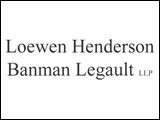A researcher with the University of Manitoba is confident new tools being developed to assess the risk factors associated with lameness among group housed sows will help pork producers increase longevity and improve the profitability of their farms.
The University of Manitoba in collaboration with the University of Guelph and the Prairie Swine Centre is involved in a multidisciplinary project designed to assess the risk factors associated with lameness in pregnant group housed sows.
Factors affecting success of sow group housing was discussed earlier this week as part of the Faculty of Agricultural and Food Sciences Seminar Series for 2011-2012.
Dr. Laurie Connor, the head of the University of Manitoba’s Department of Animal Science, explains scientists are assessing the factors that affect productivity and longevity of pregnant sows housed under various group housing systems in an effort to develop tools producers can use to assess the risk of sows becoming lame.
Lameness is a major reason for culling animals currently in housing systems because, associated with lameness, if they are in fact uncomfortable it may be creating stress and so they’re not as productive.
Very often the lameness may also be associated with the animal not being able to remain in the herd for very long and so it can affect productivity, it can affect their longevity in the herd and both of those things are going to have economic impacts.
Of course if you have to treat the animal or you have to cull the animal and bring another animal in that is of economic importance as well.
Dr. Connor says developing reliable tools for early identification of lameness and identifying the risk factors that contribute to lameness will improve the ability of producers to select animals for particular group housing systems.
A final report is expected by the end of 2012.



